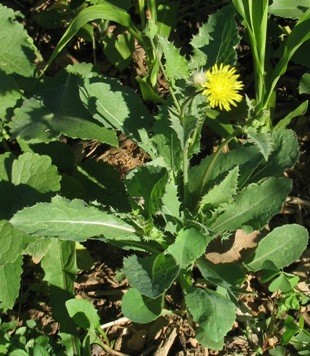
Sonchus oleraceus / جعضيض
Sonchus oleraceus Wall. Sonchus oleraceus subsp. angustissimus H. Lindb. Sonchus oleraceus var. asper L. Sonchus oleraceus subsp. asper (L.) Ehrh. Sonchus oleraceus f. asper (L.) Sonchus oleraceus f. hydrophilus (Boulos) J. Kost. Sonchus oleraceus var. integrifolius Wallr. Sonchus oleraceus var. lacerus Wallr. Sonchus oleraceus var. littoralis Kirk Sonchus oleraceus subsp. oleraceus L. Sonchus oleraceus f. runcinatus Fiori Sonchus oleraceus var. triangularis Wallr.
Adheed, Hdheed, Galawein, Telfaf
Sowthistle, Sow thistle, Smooth sow thistle, Annual sow thistle, Hare's colwort, Hare's thistle, Milky tassel, Swinies
Quadaid
Asteraceae
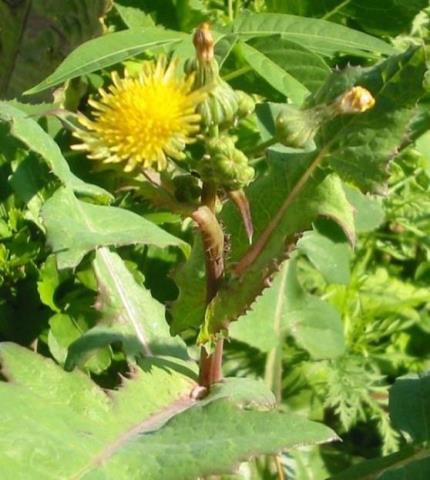
Aerial parts
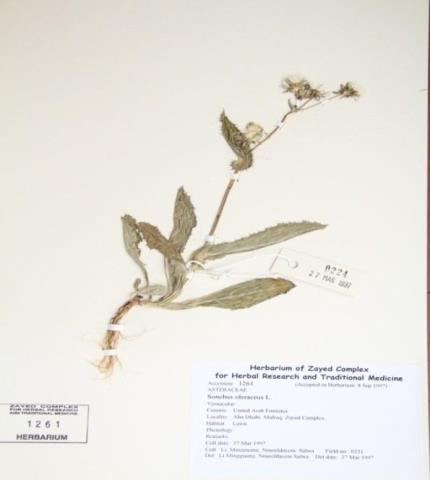
Herbarium specimen
Ethnobotanical Characteristics
Description
Annual herb. Stems up to 75cm, with a few branches. Leaves basal and cauline, the cauline amplexicaule; leaves lobed, lobes with dentate to serrate margins. Flower heads terminal, yellow. Involucres 10mm; bracts triangular to lanceolate. Achenes oblanceolate, with pappus. Annual, occasionally biennial, very erect and smooth-stemmed.
Habitat and Distribution
Very common weed of damp habitats in towns, plantations and oases, including industrialized offshore islands; found beside old Abu Dhabi sewage farms. Cosmopolitan. Occurring as a weed in cultivated areas in the Arabian Peninsula. (Ghazanfar, 1994, Western, 1989).
Part(s) Used
Whole plant
Traditional and Medicinal Uses
All parts of the plant are used as a coolant, diuretic, laxative and as a general tonic. An infusion is made of the entire plant and taken as a drink. In Baluchistan (Pakistan) the roots and leaves are used as a tonic and febrifuge. The brownish gum left after the evaporation of the juice of this plant is considered to be a powerful hydragogue and cathartic. It has also been used as a so-called cure for the opium habit. The plant has been found to contain an alkaloid. (Ghazanfar, 1994, Batanouny, 1999).
Pharmacognosy and Phytochemistry
Plant material Studied
Dried leaf
General appearance
The leaf is comparatively large and broad but it shrinks on drying and becomes twisted; it is partially torn. It is grayish brown in colour with a pinkish tint.
Microscopic characteristics
A transverse section through the leaf exhibits its dorsiventral character. The upper and lower epidermises consist of oval, somewhat distorted cells that slightly bulge outwards. More of these cells are found at the lower epidermis. The upper epidermis is underlain by a layer of palisade tissues, which is composed of long and broad cells that are compactly packed and have straight cell walls, but some cells have slightly undulating walls. They contain a variety of small-sized colored materials. The spongy mesophyll consist of small rounded cells that are also rich in a mixture of minute coloured materials; however, some cells contain comparatively large brownish-yellow masses. Those which enclose the vascular tissues are almost polygonal in shapes. The xylem vessels are annularly and spirally thickened.
Plant material Studied
Dried stem and branches
General appearance
Stem and branches are erect, smooth, ridged, and they have polygonal cross-sections. They are also widely hollow and compressed. They are grayish green or brownish-yellow in colour.
Microscopic characters
A transverse section through the stem or a branch exhibits their almost cylindrical outlines with some broad undulations at the outer periphery. The epidermis consists of small oval cells. It is underlain alternatively by two zones: one zone consists of small cortical cells and white non-lignified fibers that subtend the isolated groups of vascular tissues while the other zone consists of the cortical cells and non-lignified yellowish brown fibers that subtend lignified fibers and cells of wide lumens. The xylem tissues, which are annularly thickened are moderately lignified. The pith consist of large rounded cells but the cells at the centre of the pith are somewhat distorted and they separate from other cells, forming a large circle that surround a large hollow area at the very centre.
Parts studied
leaf and stem

A) TS of leaf
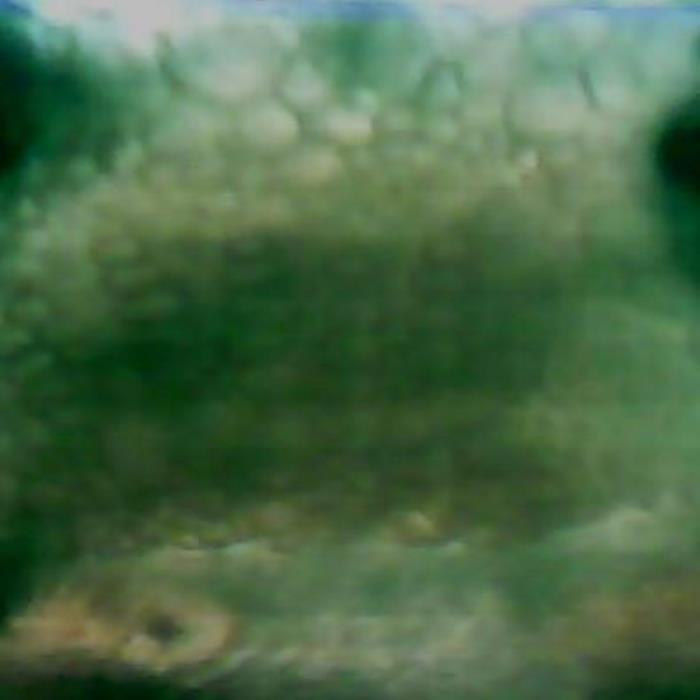
B) TS of stem
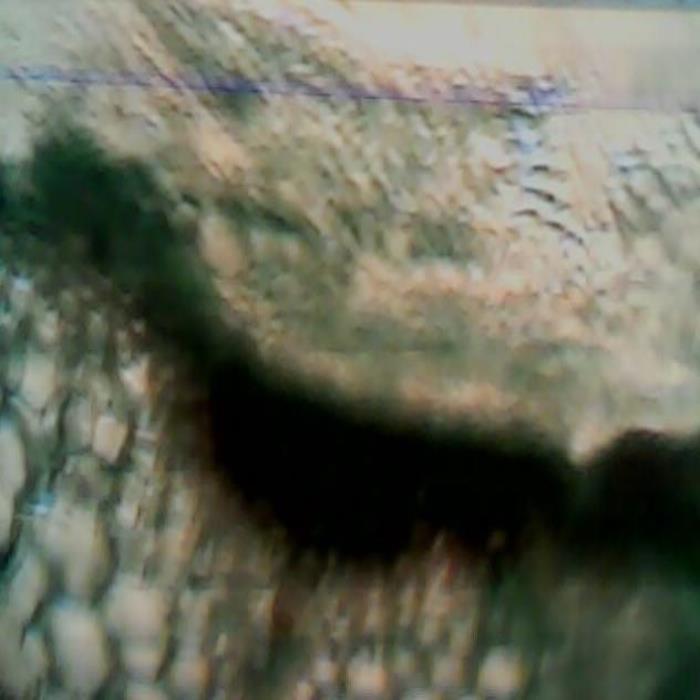
C) Stem vascular tissues
- A. TS of the leaf at the upper portion of the leaf showing the distorted upper epidermal cells with slight bulging; the palisade layer consisting of compactly packed long and broad cells; spongy mesophyll cells with their contents of colored materials and cells surrounding the vascular tissues are almost polygonal in shape.
- B. TS of a portion of the stem showing colorless cortical cells and white non-lignified fibers that subtend isolated lignified vascular tissues.
- C. TS of a portion of the stem showing cortical cells at the lower left, vascular tissues (dark zone), the pith zone consisting mainly of distorted compressed parenchyma cells that separate to form a large hollow area (top).
Chemical constituents
Luteolin, quercetin, quercimeritrin, cynaroside, isocymaorside and luteolin-7-β -D glucuronidopyaranoside in the flowers. Sesquiterpene glycosides- sonchuside A, B, C and D, glucozaluzanin C, macroclininside A, crepidiaside A and picrisides B and C. Disaccharide (I) from aerial parts. Scopoletin, esculetin, cetyl alcohol, α-amyrin and β-sitosterol from leaves. Volatile oil contained heptanoic and hexanoic acids, γ-terpineol, geraniol, geranial, butanol, bornyl acetate and anethole, whereas non-volatile residue contained 3β,25-epoxy-3-hydroxyolean-18-en-28-oic acid. (Rastogi, 1993,1995, 1998).
The following chemical studies have been carried out on the aerial part of the plant Sonchus oleraceus (Quality Control methods, 1998; Evans, 1996; ZCHRTM unpublished work)
Physicochemical constants
Loss of weight in drying at 105°C : 9.60
Absolute alcohol solubility : 5.60
Water solubility : 24.80
Successive extractives (%)
Petroleum ether (60-80) °C : 3.20
Chloroform : 1.70
Absolute alcohol : 15.65
Ash values (%)
Total ash : 17.33
Water soluble ash : 11.67
Acid insoluble ash (10% HCl) : 1.33
pH values (aqueous solution)
pH of 1% solution : 5.811-5.813
pH of 10% solution : 5.394-5.405
Elemental analyses
Ash values (British Herbal Pharmacopeia)
Assay and identification of element (AOAC International)
|
Apparatus |
AA-6800 Shimadzu-Flame method |
||||
|
Element |
Std. conc. µg/ml (ppm) |
Sample conc.mg/ml |
Sample absorbance |
Actual conc. mg/ml |
Actual conc. (%) |
|
Cr |
1, 2, 4 |
10 |
0.0130 |
0.02772 |
0.002772 |
|
Zn |
0.25, 0.5, 1 |
10 |
0.3189 |
0.02755 |
0.002755 |
|
Cu |
1, 2, 4 |
10 |
0.0303 |
0.01352 |
0.001352 |
|
Fe |
1, 2, 4 |
10 |
0.4083 |
0.28919 |
0.028919 |
|
K |
1, 2, 4 |
1 |
1.6155 |
16.0328 |
1.60328 |
|
Pb |
1, 2, 4 |
10 |
0.0000 |
0.0000 |
0.0000 |
|
Cd |
0.25, 0.5, 1 |
10 |
0.0010 |
0.0001 |
0.00001 |
|
Ca |
5, 10, 20 |
10 |
0.0656 |
0.3976 |
0.03976 |
| 1ppm conc. = 1µg/ml; Actual conc. (%) =Actual conc.(ppm)x0.0001 [1ppm=0.0001%] | |||||
UV Spectral studies
|
Ultraviolet Spectrum (USP) |
||||
|
Apparatus |
Milton Roy Spectronic Genesys 5 Spectrophotometer - Milton Roy. |
|||
|
Sample conc. (mg / ml) |
Solvent |
λ max (nm) |
λ min (nm) |
Abs.( λ max - λ min) |
|
1.25 |
Intestinal Fluid simulated without pancreatic pH=7.50.1 |
No shift |
No shift |
- |
|
1.01 |
Gastric Fluid simulated without pepsin pH =1.20.1 |
283 325 |
265 307 |
0.704 - 0.688 0.653 - 0.632 |
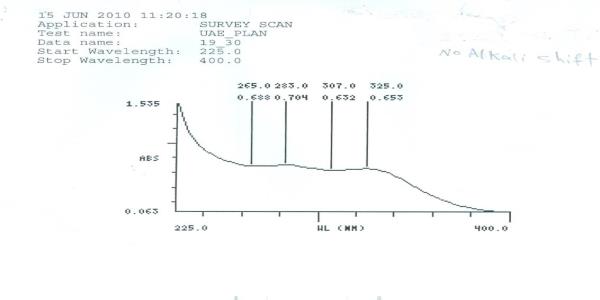
Gastric Fluid simulated without pepsin
Chromatographical Studies
Thin layer chromatography (TLC): Wagner and Bladt, 1996
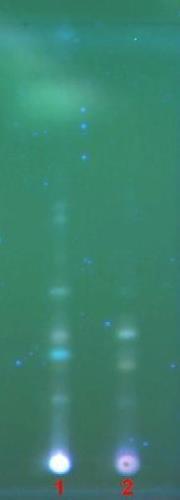
A
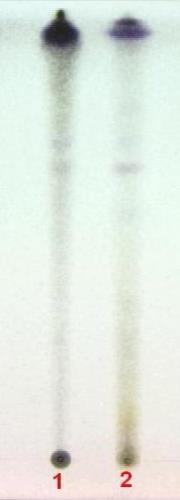
B

C
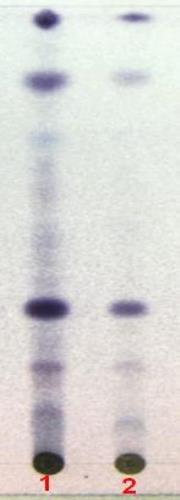
D
TLC fingerprint of Petroleum ether 60-80°C (track 1) and MeOH extract (track 2)
|
Mobile phase Fig. |
A&D |
: |
Toluene, ethyl acetate (93:7) |
|
|
B |
: |
Ethyl acetate, methanol, water (100:13.5:10) |
|
|
C |
: |
Toluene, ethyl formate, formic acid (5:4:1) |
|
Detection |
A |
: |
UV 366nm |
|
Derivatization |
B, C&D |
: |
Vanillin-Sulphuric acid-vis |
Pharmacological and Toxicological Studies
Literature and reported information regarding the plant: The data obtained by studies using the plant extract of Sonchus oleracea, studies indicated that Sonchus oleraceus extract exerts an anxiolytic-like effect on mice (Fabiana, 2009). The hydroethanolic extract of Sonchus oleraceus demonstrated anti-inflammatory activity in rats, which supported previous claims of its traditional use (Fabiana, 2010). The hydroethanolic and dichloromethane extracts of Sonchus oleraceus showed antinociceptive action in mice, in accordance of its traditional use (Vilela, 2009). S. oleraceus extract or its purified constituents could be of potential interest for the treatment of depressive disorders (Fabiana, 2010).
Phytochemical study of the roots of lupeol four and β-sitosterol- 3-O-glucopyranoside from Sonchus oleraceus showed the cytotoxic activity of 1 and 2 against PC33 and L5187Y cell lines and antibacterial activity against S. aureus, B. subtilis, E. coli and N. gonorrhea (Ehab Saad, 2009).
The following pharmacological and safety evaluation studies were carried out at ZCHRTM on the Sonchus oleraceus plant using 70% extract (Derelanko 2002; Han, 2003):
|
ACTIVITY |
RESULTS |
|||
|
Strong |
Moderate |
Mild |
Negative |
|
|
Anti-diabetic activity |
|
|
|
√ |
|
Analgesic activity |
√ |
|
|
|
|
Anti-inflammatory (Ear edema) |
√ |
|
|
|
|
Antidepressant activity (TST) |
|
√ |
|
|
|
Effect on rabbit jejunum |
|
√ |
|
|
|
Effect on rat fundus |
√ |
|
|
|
|
Effect on Guinea pig ileum |
|
√ |
|
|
|
Sexual studies (Rabbit corpus cavernous tissue strip) |
|
|
√ |
|
|
Effect on right rat atria |
|
√ |
|
|
|
Acute toxicity studies |
|
|
|
√ |
|
Autonomic effect |
|
|
|
√ |
|
Body weight |
|
|
|
√ |
|
Mortality |
|
|
|
√ |
|
LD50= > 5g/kg p.o. |
> 5g/kg p.o. |
|||
Summary of the results
The plant extract did not possess potent anti-hyperglycemic activity; some results suggest the presence of weak spasmolytic activity/ anti-spasmodic action of the plant extract. The plant appears to be significant analgesic in nature; Showed the insufficiency of the sexual response in rabbit corpus cavernous tissue strip method. Significantly reduced the ear edema of the mice (anti-inflammatory). Presence of moderate antidepressant activity. Safe at the dose tested; LD 50= > 5g/kg, p.o.; No mortality was recorded.
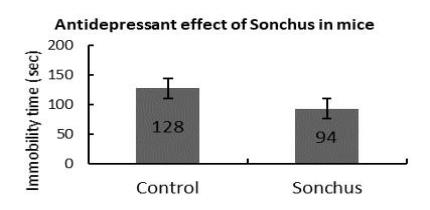
Antidepressant effect in mice
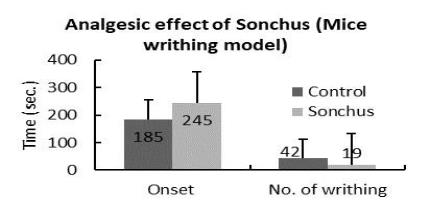
Analgesic effect on Mice writhing model
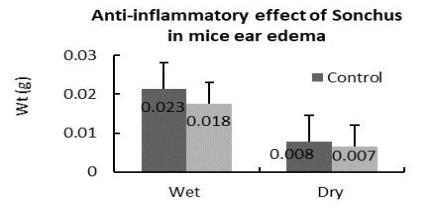
Anti-inflammatory on mice ear edema
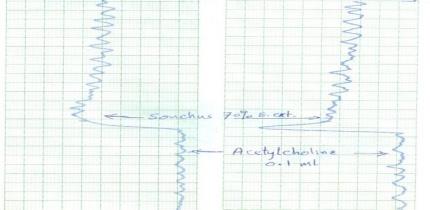
Contraction effect on acetylcholine treated detrusor muscle
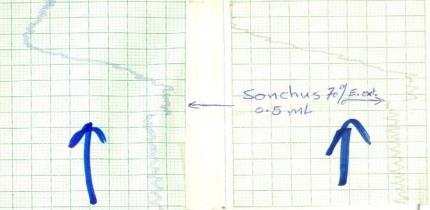
Contraction effect on isolated rat fundus strip
Antimicrobial activity
The aqueous extract of the whole plant was tested against Mycobacterium smegmatis, C. tropicalis, different strains of Staphylococcus aureus (Including ATCC 257) as well as strains of Methicillin Resistant Staphylococcus aureus, strains of Streptococcus pyogenes, strains of E. coli (Including ATCC UN 109), different strains of ESBL-producing K. pneumonia, E. coli, Pseudomonas aeruginosa, and showed weak antibacterial activity against S. aureus and S. pyogenes.
References
- Ehab Saad Elkhayat, “Cytotoxic and Antibacterial Constituents from the Roots of Sonchus oleraceus L. Growing in Egypt ,Assiut Bulletin of Pharmaceutical Science.june 2009, 39:189- 198 .
- Fabiana C. Vilelaa, Andressa D. Bitencourta, Layla D.M. Cabrala, Lidiane S. Franquia, Roseli Soncinia and Alexandre Giusti-Paiva. Anti-inflammatory and antipyretic effects of Sonchus oleraceus in rats. Department of Biomedical Sciences of federal University of Alfenas–MG, Alfenas, Brazil. Journal of Ethnopharmacology, Feb. 2010, 127: 737-741 .
- Fabiana Cardoso Vilela, Marina de Mesquita Padilha, Geraldo Alves-Da-Silva, Roseli Soncini, Alexandre Giusti-Paiva. Antidepressant-Like Activity of Sonchus oleraceus in Mouse Models of Immobility Tests. Journal of Medicinal Food. Feb. 2010, 13: 219-222.
- Fabiana Cardoso Vilela, Roseli Soncini and Alexandre Giusti-Paiva, Anxiolytic-like effect of Sonchus oleraceus L. in mice. Department of Biomedical Science, Federal University of Alfenas, Alfenas-MG, Brazil. Journal of Ethno pharmacology Vol. July 2009, 124:325-327 .
- Fawzi, M. K. (1995). Weeds in the United Arab Emirates. University of U.A.E.
- Jonbloed, M. V., Feulner, G. R., Boer, B. & Western, A. R. (2003). The comprehensive Guide to the Wild Flowers of the United Arab Emirates, Erwda, Abu Dhabi, U.A.E.
- K.H. Batanouny. Wild medicinal plants in Egypt, Academy of Sci. Res. & Tech., p. 197, Egypt, 1999.
- Mandaville, J. P. (1990). Flora of Eastern Saudi Arabia. Kegan Paul International, Riyadh, Saudi Arabia.
- Rastogi & Mehrotra, Compendium of Indian medicinal plants : vol. 3, PID, New Delhi,1993, p.601
- Rastogi & Mehrotra, Compendium of Indian medicinal plants : vol. 4, PID, New Delhi,1995, p.685
- Rastogi & Mehrotra, Compendium of Indian medicinal plants : vol. 5, PID, New Delhi,1998, p.797.
- Vilela FC, de Mesquita Padilha M, Dos Santos-E-Silva L, Alves-da-Silva G, Giusti-Paiva A Evaluation of the antinociceptive activity of extracts of Sonchus oleraceus L. in mice. J Ethnopharmacol. July 2009, 124:306-10.
- Western, A. R. (1986). The Flora of United Arab Emirates. An introduction. –Al Ain
